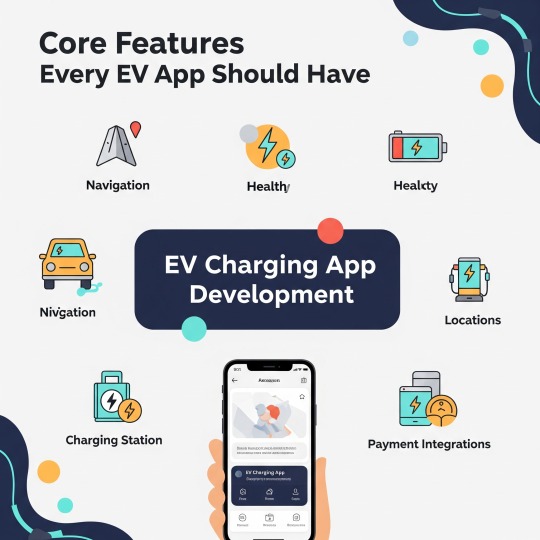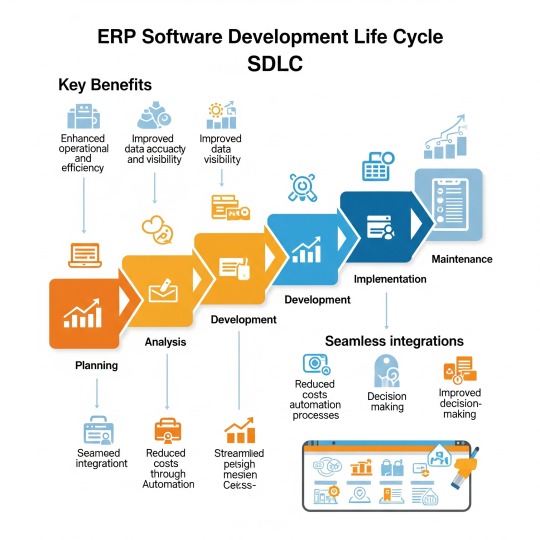Don't wanna be here? Send us removal request.
Text

2025 is set to be a pivotal year for Android development, with a focus on these major Android App Development Trends:
AI Integration: Tools like Google Stitch will automate UI code generation, while Gemini AI in Android 16 will enable more intelligent, context-aware apps.
Extended Reality (XR): With the evolution of Android XR and new devices like the Samsung headset, developers will need to create immersive experiences and design for diverse form factors.
Performance & Architecture: Android 16's shift to a 16 KB memory page size will require developers to recompile native code for compatibility and performance gains.
On-Device AI: The use of LLMs like Gemini Nano will allow for faster, more private AI processing directly on the device.
Sustainable Coding: The new Eco Metrics API in Android 16 will help developers build more energy-efficient apps.
#Android App Development Trends#Android App Development#Android App Development Services#Android App Development Company#Android App#app developing company
0 notes
Text

Looking to launch a powerful mobile app? Android Application Development Services are your strategic partner. They handle everything from initial UI/UX design that captivates users to robust backend development ensuring seamless functionality.
These services cover the entire app lifecycle: crafting intuitive interfaces, writing clean code, rigorous testing, and successful deployment on the Google Play Store. Beyond launch, they provide ongoing maintenance and updates, ensuring your app remains competitive and performs flawlessly.
By partnering with experts in Android Application Development Services, you transform your ideas into innovative, high-performing mobile solutions that truly stand out.
#android application development services#android app development#android app developers#android development service#android application services#android app development service#android app development services#android software development company
0 notes
Text

Building a successful EV app hinges on core features and a stellar user experience. For EV Charging App Development, prioritize:
Real-Time Charging Locator: Essential for finding available stations and pricing, integrating with major networks like Tesla Supercharger.
EV-Specific Route Planning: AI-driven navigation to alleviate range anxiety, considering battery life and charging stops.
Battery Monitoring: AI-powered health tracking, optimized charging cycles, and predictive maintenance to prevent issues.
Smart Charging Management: Integrate with smart home systems for scheduled, cost-effective, and AI-optimized home charging (can save up to 25%).
Beyond these, focus on an intuitive UI/UX, a robust backend, and smart monetization. Staying updated on trends like V2G and advanced AI will keep your app future-proof for the evolving EV landscape.
#EV Charging App Development#EV Charging App Development Company#EV Charging App Development Company in India#EV Charging App Development Company in Noida#EV App Development#EV Charging App Development Company in Delhi
0 notes
Text

This snapshot perfectly illustrates the vibrant growth and diverse landscape of the wellness app market! From managing mental health to tracking fitness goals, these platforms are becoming indispensable tools for personal well-being.
Key takeaways from this visual deep-dive:
Market on the Rise: Notice the strong upward trend in market size and revenue – a clear indicator of increasing adoption and investment in digital wellness solutions.
Diverse Offerings: Apps cover a wide spectrum of needs, including Yoga, Sleep, Fitness, Mental Tracking, and Mental Health Support. This variety caters to holistic well-being.
Strong Engagement: High percentages in "Wellness App" and "Staret Sin" sections suggest significant user engagement and market presence.
Growing Revenue Streams: The "Revenue" chart shows consistent contributions, highlighting the financial viability of the sector.
Wellness apps are not just a trend; they're a fundamental shift in how we approach health and self-care. They empower individuals to take control of their well-being, anytime, anywhere.
#wellness app#wellness app development#wellness app development company#wellness app development company in india#wellness app development company in noida
0 notes
Text

Navigating the ERP Software Development Life Cycle (SDLC)
Implementing an Enterprise Resource Planning (ERP) system is a significant undertaking, crucial for modern business management. To handle its complexity, ERP development follows a structured Software Development Life Cycle (SDLC), ensuring a robust, scalable system aligned with business goals.
The journey begins with Planning & Feasibility Analysis, where project scope, goals, and resources are defined. This moves into Requirement Gathering, detailing what the system must achieve through stakeholder collaboration. Next, System Design transforms these requirements into a blueprint, covering architecture and user experience.
The core of the process is Coding and Implementation, where the system is built module by module, often using agile methodologies for iterative development. This is followed by rigorous Integration & Testing, ensuring all components work seamlessly and securely.
Finally, the system is Deployed into the live environment, including secure data migration. The cycle concludes with ongoing Maintenance & Upgrades, vital for addressing issues, improving features, and adapting to evolving business needs. Each phase is critical, contributing to a successful ERP implementation that drives efficiency and growth.
#ERP Software Development#ERP Software Development Company in India#erp software#ERP Software Development Company#ERP Software Development Company in Noida
1 note
·
View note